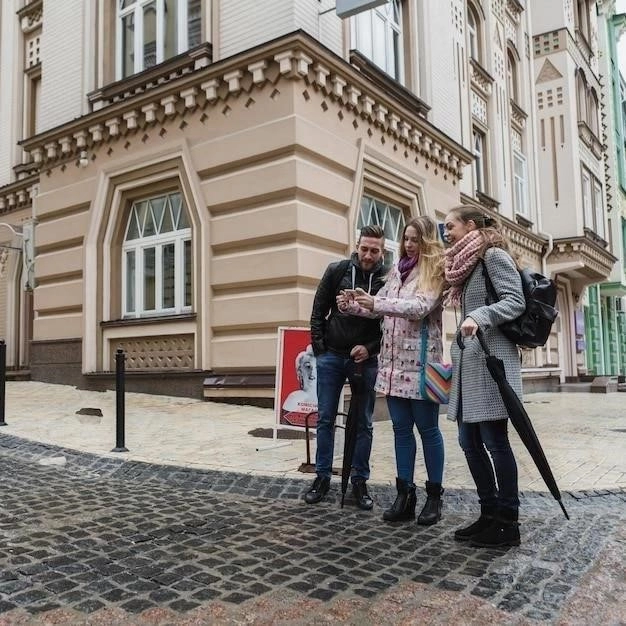The History of Polish Immigration to Greenpoint
Greenpoint’s Polish roots trace back to the late 19th century, with a significant influx occurring after 1870. Seeking opportunities and fleeing hardship, Polish immigrants established a vibrant community centered around St. Stanislaus Kostka Church. The neighborhood’s industrial character provided employment, solidifying Greenpoint as a haven for the Polish diaspora.
The Rise of “Little Poland”
The early 20th century witnessed the solidification of Greenpoint as a predominantly Polish enclave, earning it the moniker “Little Poland.” This period saw a surge in Polish immigration, driven by factors such as political upheaval and economic hardship in their homeland. Greenpoint offered a familiar cultural landscape, with Polish language readily spoken, traditional shops lining the streets, and the comforting presence of St. Stanislaus Kostka Church serving as a spiritual anchor.
Polish businesses flourished, catering to the needs and desires of the community. Butcher shops specializing in Polish sausages and smoked meats, bakeries filled with the aroma of rye bread and sweet pastries, and restaurants serving hearty, traditional fare became cornerstones of daily life. Social clubs, Polish language newspapers, and vibrant cultural events further reinforced the sense of shared identity and heritage. This thriving cultural ecosystem transformed Greenpoint into a microcosm of Poland, a place where immigrants could preserve their traditions while forging new lives in America.
The strong social bonds forged within “Little Poland” provided a crucial support system for new arrivals, easing their transition into American society while maintaining a vital connection to their Polish heritage. This sense of community resilience would be tested in the latter part of the 20th century, as economic shifts and changing demographics began to reshape the neighborhood’s landscape.
Traditional Polish Businesses and Landmarks
The heart of Greenpoint’s “Little Poland” beats strongest along Manhattan Avenue, a bustling thoroughfare where the sights, sounds, and aromas of Poland are vibrantly on display. Here, amidst the influx of modern boutiques and cafes, traditional Polish businesses persevere, standing as proud testaments to the neighborhood’s enduring heritage.
Family-run butcher shops, like the esteemed Eagle Provisions, have been purveying their handcrafted kielbasa, smoked hams, and other Polish delicacies for generations. The air is thick with the tantalizing scent of smoked meats, drawing in patrons both old and new. Bakeries, with their inviting window displays of meticulously crafted pastries and breads, offer a sweet taste of Poland. From delicate cream cakes and poppyseed rolls to hearty rye breads, these bakeries continue to be morning rituals and cherished gathering places for the Polish community.
Beyond the allure of culinary delights, Greenpoint boasts cultural landmarks that speak to the soul and history of its Polish community. The Polish National Home, a stately edifice on Driggs Avenue, has served as a cultural and social hub for generations. Its grand ballroom has hosted countless weddings, dances, and community events, while its walls echo with the music and laughter of generations past. These businesses and landmarks represent more than just commerce or architecture; they are the threads that weave together the rich tapestry of Polish life in Greenpoint, preserving traditions and memories for generations to come.

The Influence of St. Stanislaus Kostka Church
Towering above the streets of Greenpoint, St. Stanislaus Kostka Church stands as a majestic symbol of faith, resilience, and unwavering Polish identity. Since its establishment in 1875, the church has been the spiritual heart of “Little Poland,” a beacon of hope and solace for generations of Polish immigrants seeking comfort and connection in a new land.
Beyond its religious significance, St. Stanislaus Kostka served as a vital community center, a place where Polish language and traditions were celebrated and nurtured. Its halls hosted Polish language classes, social gatherings, and cultural events, ensuring the transmission of heritage to future generations. The church’s annual feast day celebrations, a vibrant tapestry of Polish music, dance, and cuisine, continue to draw crowds from across New York City, showcasing the enduring vibrancy of Polish culture.
Throughout its history, St. Stanislaus Kostka Church has been a steadfast pillar of support for the Polish community, offering guidance during times of uncertainty and celebrating moments of joy and triumph. Its towering spires serve as a constant reminder of the deep-rooted Polish heritage that continues to shape the character of Greenpoint, even as the neighborhood embraces the winds of change.
The Changing Landscape: Gentrification and its Impact
The dawn of the 21st century brought a wave of transformation to Greenpoint, as the forces of gentrification, first witnessed in neighboring Williamsburg, began to reshape the neighborhood’s social and economic fabric. Attracted by Greenpoint’s relatively affordable rents, proximity to Manhattan, and burgeoning artistic scene, a new demographic of young professionals and artists began to move in, altering the neighborhood’s long-standing identity.
This influx of new residents brought with it a surge in trendy cafes, upscale boutiques, and chic restaurants, catering to a different clientele and economic reality. While some welcomed the arrival of new businesses and amenities, others expressed concern over rising rents, displacement of longtime residents, and the potential erosion of Greenpoint’s unique cultural heritage. The visual landscape of the neighborhood began to shift, with renovated industrial spaces standing alongside traditional Polish storefronts, a tangible reflection of the demographic and economic changes underway.
The impact of gentrification on Greenpoint’s Polish community has been complex and multifaceted. While some Polish businesses have adapted to the changing demographics, others have struggled to compete in the new market, leading to closures and a sense of loss among longtime residents. The once ubiquitous sound of Polish spoken on the streets has become less common, replaced by a blend of languages reflecting the neighborhood’s evolving identity. This period of transition has sparked debate and reflection about the balance between preserving the neighborhood’s rich history and embracing the dynamism of urban evolution.

The Influx of Trendy Shops and Businesses
Greenpoint’s changing demographics have ushered in a new wave of entrepreneurship, transforming the neighborhood’s commercial landscape with an eclectic mix of trendy shops and businesses. Once dominated by Polish storefronts, Manhattan Avenue and its adjoining streets now boast a diverse array of boutiques, artisanal coffee shops, vintage clothing stores, and art galleries, reflecting the tastes and preferences of a new generation.
This influx of trendy businesses has injected a palpable buzz into Greenpoint’s atmosphere, attracting a steady stream of visitors from across the city and beyond. The aroma of artisanal coffee blends with the scent of freshly baked pastries, emanating from stylish cafes where laptops and lively conversations are commonplace. Boutiques, with their carefully curated selections of independent designers and vintage finds, draw fashion-conscious shoppers seeking unique pieces. Art galleries, showcasing the works of emerging and established artists, contribute to the neighborhood’s growing reputation as a creative hub.
While this surge in new businesses has undeniably altered Greenpoint’s character, it has also fostered a spirit of vibrancy and diversity. The neighborhood’s streets now hum with a blend of old and new, where traditional Polish delis stand alongside trendy juice bars, offering a glimpse into the evolving tapestry of Greenpoint’s identity.
The Coexistence of Old and New: A Unique Atmosphere
Greenpoint exists in a fascinating state of flux, a dynamic blend of old and new where the echoes of its Polish heritage intertwine with the pulse of contemporary urban life. This captivating juxtaposition has cultivated a unique atmosphere, a palpable sense of both rootedness and reinvention that permeates the neighborhood’s streets.
On a single block, one might encounter a time-honored Polish butcher shop, its windows displaying rows of handcrafted sausages, alongside a sleekly designed coffee shop, where patrons sip cold brew and tap away on laptops. The aroma of traditional Polish pastries mingles with the scent of artisanal bread, creating a sensory experience that speaks to Greenpoint’s multifaceted identity. Weekends bring a lively mix of longtime residents browsing outdoor Polish markets and newcomers perusing vintage clothing racks or enjoying brunch at a trendy cafe.
This harmonious coexistence of old and new is not without its tensions, as residents grapple with the challenges of preserving heritage amidst rapid change. Yet, it is precisely this dynamic interplay that defines Greenpoint’s unique character—a testament to its ability to embrace evolution while honoring its past. This delicate balance fosters a vibrant and inclusive atmosphere, where the stories of generations past intertwine with the aspirations of a new generation shaping Greenpoint’s future.

Greenpoint’s Future: Preserving Heritage in a Changing Landscape
As Greenpoint continues to evolve at a rapid pace, navigating the dynamics of preservation and progress remains a paramount concern. The neighborhood faces the ongoing challenge of balancing the influx of new residents and businesses with the safeguarding of its Polish heritage, ensuring that “Little Poland” remains an integral part of Greenpoint’s identity.
Community-driven initiatives are crucial in this endeavor. Organizations dedicated to documenting and celebrating Polish culture in Greenpoint, such as local historical societies and cultural centers, play a vital role in preserving traditions and sharing stories with newer residents. Supporting long-standing Polish businesses is essential, as these establishments serve as tangible links to the neighborhood’s past and vital gathering places for the Polish community. Encouraging dialogue and understanding between longtime residents and newcomers is paramount, fostering a shared appreciation for Greenpoint’s multifaceted heritage.
Greenpoint’s future hinges on its ability to embrace its evolving identity while cherishing its rich history. By actively supporting Polish businesses, engaging in cultural exchange, and promoting inclusive policies, Greenpoint can forge a path where its unique blend of old and new thrives for generations to come. The preservation of “Little Poland” is not merely about safeguarding the past; it is about enriching Greenpoint’s present and ensuring a vibrant future where history and progress walk hand in hand.

Experiencing Greenpoint: A Blend of Cultures
To truly experience Greenpoint is to immerse oneself in the captivating tapestry woven from its rich Polish heritage and its dynamic, evolving present. This unique blend of cultures manifests in myriad ways, creating an atmosphere that is both nostalgic and refreshingly modern.
Begin your exploration by venturing into the heart of “Little Poland,” where traditional Polish delis and restaurants beckon with the irresistible aromas of smoked meats, sauerkraut, and freshly baked rye bread. Engage with the proprietors, many of whom have been serving the community for decades, and listen intently as they share stories passed down through generations. Step inside St. Stanislaus Kostka Church, its grandeur a testament to the enduring faith and resilience of the Polish community. Attend a cultural event or festival, and witness the vibrant traditions of Polish music, dance, and cuisine come alive.
Venture beyond Manhattan Avenue to discover the neighborhood’s newer additions—the trendy boutiques, art galleries, and cafes that have come to define Greenpoint’s burgeoning artistic spirit. Spend an afternoon browsing through vintage clothing racks, savoring a meticulously crafted cappuccino, or admiring the works of local artists. Engage in conversation with residents, both old and new, and gain a deeper understanding of the perspectives and experiences that shape Greenpoint’s unique character.










